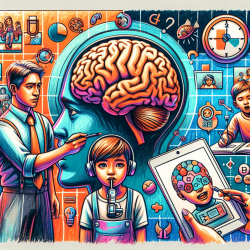As practitioners dedicated to creating the best outcomes for children, it is essential to stay informed about innovative interventions. One such promising intervention is Transcranial Direct Current Stimulation (tDCS), which has shown potential in improving symptoms in children with Autism Spectrum Disorder (ASD). This blog explores the key findings from the research article titled "Transcranial Direct Current Stimulation (tDCS) over the Left Dorsal Lateral Prefrontal Cortex in Children with Autism Spectrum Disorder (ASD)" and discusses how these findings can be applied in practice.
What is tDCS?
Transcranial Direct Current Stimulation (tDCS) is a non-invasive neuromodulation technique that applies a low direct current to the scalp to modulate cortical excitability. It has been explored for various neurological and psychiatric conditions, including ASD.
Key Findings from the Research
The study involved a three-week tDCS treatment targeting the left dorsal lateral prefrontal cortex (DLPFC) in children with ASD. Here are the primary outcomes:
- tDCS treatment was well-tolerated with no serious adverse events.
- Significant reductions in Childhood Autism Rating Scale (CARS) scores.
- Improved sleep quality as measured by the Children's Sleep Habits Questionnaire (CSHQ).
- Notable improvements in general impressions of autism severity.
Implications for Practitioners
These findings suggest that tDCS could be a valuable tool in the therapeutic arsenal for children with ASD. Here are some ways practitioners can leverage this information:
- Integrate tDCS into Treatment Plans: Consider incorporating tDCS sessions as part of a comprehensive treatment plan for children with ASD, particularly those with severe symptoms.
- Monitor Sleep Patterns: Given the improvements in sleep quality observed in the study, practitioners should monitor sleep patterns and consider tDCS as a potential intervention for sleep disturbances in ASD.
- Stay Informed and Advocate: Keep abreast of the latest research on tDCS and advocate for its inclusion in therapeutic settings where appropriate.
Encouraging Further Research
While the study's results are promising, further research with larger sample sizes and longer treatment durations is necessary to fully understand the potential of tDCS in treating ASD. Practitioners are encouraged to participate in or support ongoing research efforts to validate and expand upon these findings.
To read the original research paper, please follow this link: Transcranial Direct Current Stimulation (tDCS) over the Left Dorsal Lateral Prefrontal Cortex in Children with Autism Spectrum Disorder (ASD)










